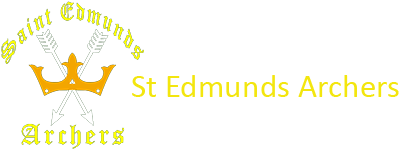About Archery
There are many different forms of archery each with their own challenges and attraction. The principal disciplines are Target, Field, Clout and Flight. These re described below in more details. Within each archery disciplines different types of bow can be used and these are also set out below in more detail.
Target Archery
This form of archery is one of the most popular globally. In this discipline the archer will shoot a set number of arrows at a round target at a set distance. The distance for the target varies from as close as 10 yards to 100 Yards. There are both imperial (measured in yards and scored 1 to 9 across 5 zones) and metric systems (measured in metres and scored 1 to 10 across 10 zones).

Target archery can be undertaken both indoors and out. Indoors the ranges are shorter and targets smaller.
All styles of bows can take part in this discipline and age groups too.
Field Archery

This involves shooting at targets of varying and unmarked distance, often in rough woodland terrain. 3D archery focuses on shooting at life-size models of game, in other forms the targets may be images or even round targets.
All bow types may compete (longbows, recurve and compound).
Clout Archery
Similar to target archery, except that the archer attempts to drop arrows at long range (180 yards for the men and 140 yards for women) into a series of circular scoring zones on the ground surrounding a marker flag. The flag is 12 inches square and is fixed to a stick. The flag should be as near to the ground as is practicable. Archers shoot ‘ends’ of six arrows.
A Clout round usually consists of 36 arrows.
All bow types may compete (longbows, recurve and compound). There are shorter distances for juniors depending on age.
Flight Archery
Flight Archery can only take place where space permits since archers compete by shooting for sheer distance. Archers shoot a number of arrows and then search for the one which has been shot the farthest, marking it with an identifiable marker. At the end of the round, archers stand or sit by their furthest arrows while judges measure the distances they were shot. There are many classes that one can shoot in, dependending on the type of bow and its draw weight.
Recurve Bow

A bow with limbs that deflect toward the back of the bow to increase leverage when the bow is strung. The Recurve is also known as the Olympic Bow can also be fitted with stabilisers and sights. Stabilisers are weighted rods that increase the inertia of the bow to reduce unwanted movement when the arrow is released.
Compound Bow

A compound bow is a modern bow that uses a levering system, usually of cables and pulleys, to bend the limbs. The pulley system enables stiff short limbs to be bent easily and by means of cams the draw weight at full draw is reduced substantially. The result is a very fast bow. Also can be fitted with Sights and stabilisers and the use of magnifying lenses is permitted.
Compounds are usually used with a release aid rather than being drawn with the fingers.
Longbow

A powerful wooden single piece bow drawn by hand; usually 5-6 feet long; historically used in medieval England. Used without any kind of sight or aid, it is popular with purists. The arrows are also wooden, unlike the aluminium or carbon fibre shafts used with recurve and compound bows.
Barebow
Unassisted, with just a bow and no additional aids such as sight. All the types of bow can be classed as Barebow as long they adhere to being drawn and released by finger and no sighting or stabilisation is fitted.
At the club we have all of these styles of bow being used by our members.
